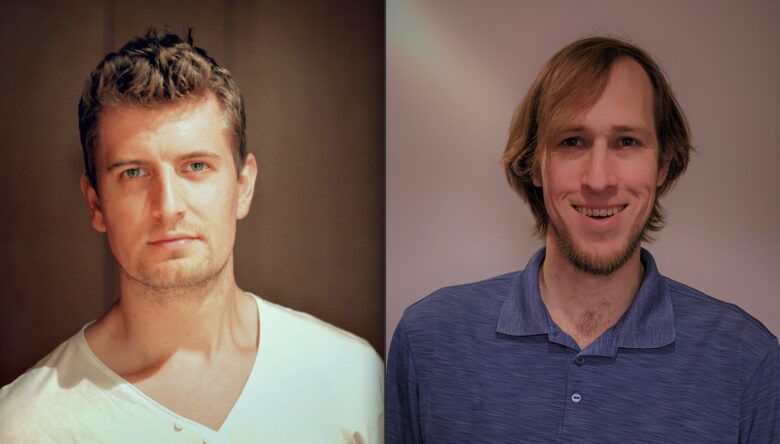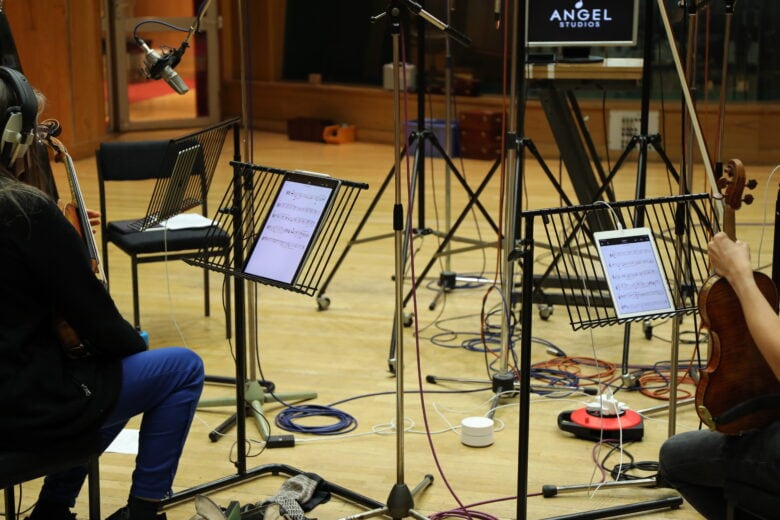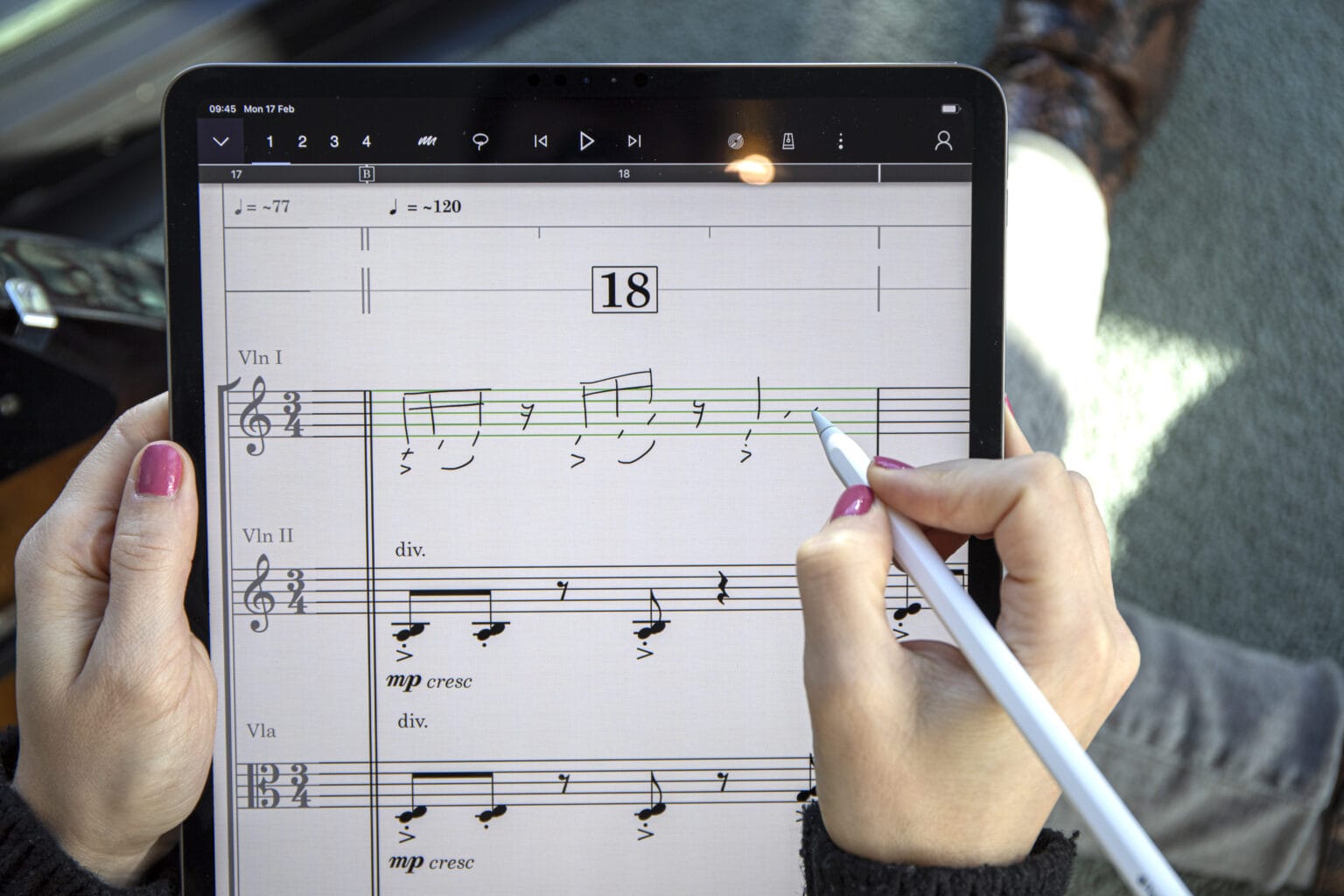Londoner David William Hearn is not a trained programmer. He has no university education when it comes to making software. And yet his musical notation app for iPad, StaffPad, just won a coveted Apple Design Award this week.
The iPad app gives composers and conductors powerful tools for writing and tweaking musical scores, and for sharing their changes instantly with musicians on a stage or in a recording studio. StaffPad places the iPad and Apple Pencil squarely in the center of the collaborative creative process.
Here’s how Hearn and his team created their award-winning music-notation app.
Thirty-four-year-old David William Hearn says he never dreamed about working as an app developer the way some people do. If Apple epitomizes, as its executives like to say, the intersection of technology and the liberal arts, he’s far more on the liberal arts end of the spectrum.
Growing up, Hearn’s older brother was the big techie in the family. Hearn, on the other hand, “obsessively learned a lot of instruments — guitars, pianos, drums — [as well as] sang, wrote songs and had ideas, and indulged in art and design,” he told Cult of Mac.
The idea behind StaffPad
The idea for StaffPad came from his other job — working as a composer and arranger on movies, live shows and TV — and watching a music and tech revolution unfold. Most importantly, he noted the places this revolution wasn’t touching.
“Sequencers [were becoming] really powerful and caused a pop and dance music boom,” he said. “But music-notation programs stayed where they had been since the mid-’90s. [They were] sprawling desktop publishing programs, designed for engraving existing music onto fixed paper sizes. Those programs are powerful, but they’re not the best environments to compose in. They don’t sound great, and they’re not flexible when it comes to making quick changes.”
Hearn said he often found himself transcribing paper scores and turning them into digital mockups. Finding a way to do this that would embrace the possibilities of a truly digital manuscript provided the impetus behind StaffPad.
“As it happens, I was enormously lucky to stumble across a Google Code page which had a README outlining a plan to build a bespoke handwriting-recognition system — and it was fairly close to the design for the recognition system I already had in mind,” he said. “I figured I’d email the author to see if he wanted to collaborate on our shared goal. That guy was Matthew Tesch.”
Tesch, who is based in Pittsburgh, Pennsylvania, agreed to help. He built a prototype in Java and sent it to Hearn in the United Kingdom. It worked. Now they just had to turn it into a polished app.

Photo: David William Hearn/Matthew Tesch
The team worked like crazy to get StaffPad made
“I was in overdrive working on as many music projects as I could in order to fund the project,” Hearn said. “It came at somewhat of a cost — both financially and personally — but I couldn’t see any other way to do it. Matt and I set up StaffPad Ltd. as a company, and I started looking for more hands to help us out.”
He pulled together a team split between Europe and the United States. They “worked like crazy” to get StaffPad built, Hearn said. Even so, it took five years to complete the task. The first version of StaffPad launched on Windows 8 in March 2015. The team chose Windows because, at the time, it offered digital pen support that Apple didn’t.
Then came the iPad Pro in late 2015 — complete with Apple Pencil, the stylus Steve Jobs promised would never ship with an Apple product. It became immediately clear to Hearn and the others that Apple Pencil would be a game-changer.
“We expanded the team, and invested all the funds that the first version had made,” Hearn said. “It took another four years, but, in February 2020, we relaunched StaffPad, and the new StaffPad Reader, for iPadOS and Windows 10. It completed the loop of writing music intuitively, getting a great demo, then being able to perform it with many musicians all reading the same ‘real-time’ score.”

Photo: David William Hearn
Inspired by Apple’s design principles
StaffPad may still be relatively new as a music tool. However, the $89 app is already carving out an army of fans.
“Technologically, StaffPad is a really nifty tool, but the best thing for me is how it has unclogged a bottleneck in the creative process,” Paul Shapiro, a professional media editor working in film, publishing and music, told Cult of Mac. “For years, I wrote directly into Logic Pro, but I always found composing a full-scale score more time-consuming than it should have been — partly psychological, I guess, and mostly due to noodling too long with all the fancy sounds available. But with StaffPad, I’m literally free to roam, and I can get an idea down straight to the app without distraction. In all honesty, my productivity — and inspiration — has jumped by a huge percentage.”
The team behind StaffPad isn’t finished perfecting the app, either. The iOS version introduced some great features, including the ability to carry out real-time collaboration with the free StaffPad Reader app.
The app’s new ScoreSync feature syncs a musical score over Wi-Fi for anyone looking at it in the Reader app. It’s a huge advance, Hearn said. With an iPad on their music stands, musicians can skip the old-fashioned paper scores.
“Being able to have a group of musicians with their own iPads instantly connect to my score without any kind of fumbling with file links or permissions or anything, then be able to change it in real time, have all their page turns handled automatically, plus a click track done across all devices in sync — it’s actually amazing.”
What’s next for StaffPad?
At present, the StaffPad devs are looking at ways to integrate the new Scribble feature in iPadOS 14 so that users can, for instance, write the title of a score by hand without an annoying popup keyboard appearing.
“The core design principles that Apple portrays have massively inspired me,” he said. “Stripping away layers of complexity, whilst simultaneously making something more powerful, is relentlessly difficult — but massively important. To be recognized with a Design Award from the company that’s inspired our own design philosophies so much is a huge honor.”
You can download StaffPad for iPad OS for $89.99. It requires an Apple Pencil to work. The StaffPad Reader app works with all iPad and Windows 10 devices. It does not require an Apple Pencil.


